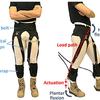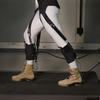Sangjun Lee
Ph.D. Candidate, Research Assistant
Harvard Biodesign Lab
John A. Paulson School of Engineering and Applied Sciences

Copyright © 2024 The President and Fellows of Harvard College | Accessibility | Digital Accessibility | Report Copyright Infringement










